The world is changing rapidly, as is the leasing industry. The impact is felt throughout the whole industry, from lessor, vendor, lessee and end users (e.g. drivers) to the suppliers of the front- and back-office IT systems used by the leasing companies. Changes affecting the leasing industry are various and include, but are certainly not limited to, accounting aspects like the new definition of a lease, Basel III funding requirements , the demand for more service-based product offerings, the introduction of CO2 emissions regulation and the increasing volatility of residual values. Additionally, the credit crunch is having an impact on balance sheet management.[The authors would like to thank several equipment and automotive leasing companies for their contribution, with a special thanks to Athlon Car Lease International.]
Introduction
This article discusses the market developments that leasing companies face and the impact of those developments on the companies’ business and IT strategy. Topics include the following:
- characteristics of the equipment and automotive lease sector;
- market developments;
- the impact of these developments on the IT strategy and systems of the leasing company;
- tools and templates available for multi-country implementations of front- and back-office systems for the leasing industry.
In addition, we have asked CHP Consulting and Sofico, two of the market leaders in IT systems for leasing companies, for their thoughts about recent market developments and the impact on their service offering.
These recent market developments and the changes the leasing industry is currently facing have predominately been triggered by changes in the business environment. These developments and changes may transform leasing companies, which have historically only been involved in funding and supplying the lease asset, into service providers. In other words, instead of funding the relevant asset, such as a photocopier, truck or passenger car, the lessor will provide the ability to make photocopies, manage the transport mobility mix and providing mobility services to drivers.
Characteristics of equipment and automotive leasing
“A lease is a lease is a lease” is not something anyone within the asset finance industry would say, because they know that one lease product can differ greatly from another: possibly in terms of product type and/or services included, and largely based on local legislation or market conditions. This applies to both market segments in leasing, equipment and automotive leasing, described in this article.
Equipment leasing products are usually geared to funding the asset or the specific usage properties of the leased asset. The nature of the asset may vary widely – from heavy machinery, trucks, ships and aircraft to medical equipment, containers, photocopiers and laptop computers. For heavy equipment, terms can exceed ten years (e.g., for trailers or machinery). For medium- and small-ticket items, the terms can vary significantly. Furthermore, leased assets can be anywhere in the world at any time. While this has an impact on the requirements for asset insurance, it plays a specific role if the lessee defaults; recovering the asset can take quite a lot of time and be a costly affair. The residual value risk in general is borne by the lessee or a third party. Additionally, various contract-to-asset relationships are possible: multiple assets may be covered by a single contract (as is often the case for photocopiers) or contracts may consist of various sub-contracts with differences in useful lives and maintenance plans (e.g., airplanes). As companies are increasingly focused on cash flow, equipment lease companies have been turning more and more to external funding even by serving as an intermediary between the lessee and the financing party, and selling service-only contracts.
Leasing products for passenger cars, whether financing leases or operating leases, have become commodity products with a continuing strong focus on the financing or use of the assets, which are traditionally leased for terms of three to five years. Furthermore, passenger cars are relatively homogenous assets. Automotive leasing is still predominantly limited to one country at a time, with a limited number of large corporate clients working with pan-European master lease agreements. There is usually a one-to-one relationship between the leased asset and the contract. Currently, lease assets under full-service operating leasing are not capitalised in the lessee’s balance sheet, however the new IAS 17 will no longer classify the asset into an operating or finance lease for contracts longer than 12 months.
Market developments
Impact of the credit crunch
Many European banks that own leasing companies are currently supported by government funding, and many players in the industry are financially distressed. As a result of the unfavourable market conditions, the leasing industry has been forced to revise its existing business models, and several banks have been contemplating divesting their leasing activities as they want to get back to their core business.
Globalisation
As a consequence, the wave of consolidation and centralisation within the mature European automotive leasing sector continues unabated: benefits of scale are vital. These days, car manufacturers are getting more and more interested in taking over the lease portfolios disposed of by banks attempting to improve their liquidity ratio. There are some major incentives for car manufacturers to purchase a multi-make portfolio. First of all, it gives them an opportunity to better control the entire value chain from manufacturing to the actual use of the asset. Secondly, they can significantly increase their customer base in one go. And lastly, the purchase of a multi-make portfolio provides them with detailed historical information about the technical quality and maintenance figures of other makes/models/types.
As a result of local market saturation, over the past few years all of the large leasing companies have expanded into emerging markets throughout Europe. They have followed their large international clients in pursuit of multinational service provision under pan-European terms and conditions. The CEE region, but also Turkey, can thank its attractive growth outlook to relatively high forecast-GDP growth rates and a shift from financing leases to operating leases. Yet there is also a downside to the growth and increasing maturity of CEE economies. Where these markets were historically important for selling ex-lease assets, more people and businesses now purchase or lease new assets.
Increasing residual value risk
It goes without saying that used-car prices have been in decline over the last three years, with a low in 2009 and stabilisation in 2010 at low levels. In countries like the Netherlands, where full operating lease is the predominant product type for automotive leasing, the losses on residuals could, in most cases, be limited to the accelerated depreciation of the portfolio, since other service components were still profitable. In other countries that have predominantly finance leases, many of the automotive leasing or financing companies were forced to recognise significant impairments. It is, however, expected that used car prices will remain much more volatile than before, because of changes in passenger-car taxation across Europe, the ever-growing model lines of car manufacturers and the growing pace of model changes. Furthermore, leasing companies have to estimate not only residual values but also the maintenance costs of hybrid and electric cars, despite there being scant historical data on these vehicles and limited ability to hedge these risks.
Equipment lessors are also affected by developments in the second-hand prices of their assets. It can be difficult and costly to repossess and remarket the recovered assets of clients in default, which can be all over Europe (e.g. containers). Fair-market value options at contract termination also force the equipment lessor to take a residual risk. Economies of scale and knowledge of second-hand asset markets are key to managing this relatively new risk for equipment lessors.
The profitability of automotive leasing companies is also being affected by the changing composition of their portfolio. The focus by businesses on costs and low CO2 emissions has given way to increasingly smaller and cheaper passenger cars, which results in lower lease revenues and margins. Furthermore, customers are rationalising their lease fleets and limiting the number of car makes which they lease. When bidding for a contract, it is not uncommon for equipment and automotive leasing companies to have to provide details on the estimated CO2 emissions of the assets to be leased, as well as on their own company’s CO2 footprint. Leasing companies can prepare for this by providing detailed environmental information on the actual use of their assets and by developing incentive schemes for clean and fuel-efficient asset usage. The emphasis on CO2 reductions will also have an impact on the distance covered not only by vehicles but also by trains and ships as part of the total equation; it is not unimaginable that a leasing company might have to offer a complete mobility mix to achieve the lowest CO2 emissions for a specific transport requirement. These types of programs, sometimes on the back of tax incentives, have already begun surfacing in mature EU markets.
Changes to lease accounting standards (IAS 17 and Basel III)
One thing that will definitely transform the leasing industry is the expected change to the accounting standard applied to leases, as set down by International Audit Standard 17 (IAS 17), which is currently under review and being redefined. This redefinition of a lease will affect all automotive and equipment lessees and lessors. In short, all asset finance companies that need to report under either International Financial Reporting Standards (IFRS) or US GAAP. Following a meeting in July 2011 between the International Accounting Standards Board (IASB) and the US Financial Accounting Standards Board (FASB), it was agreed to re-expose the draft new leasing standard before it becomes final. However, a clear result of the plan so far has been the decision to abandon the current classification of finance and operating leases under the new standard for lessor and lessee accounting. An exception will be made for short-term leases with a term of less than twelve months, where lessors and lessees will most likely be able to continue to apply the current operating-lease accounting. Figure 1 shows who is to account for the asset in the current and in the new situation.
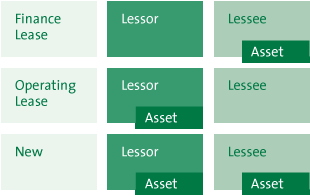
Figure 1. Accounting for the asset.
As this standard has yet to become final, its full impact remains to be seen. However, we do know that some aspects are likely to have an impact on automotive and equipment leasing. For lessors, the boards have opted for a “receivable and residual” model, whereas for lessees, a “right of use” model is opted for. Some of the aspects of the new standard that will have an impact on leasing are related to the front loading of costs and the split between asset and services accounting. Particularly for the lessor the recognition of profits on the lease commencement if “reasonably assured”, and the requirements for accounting for the residual asset are new apects of the lease directive.
Besides the changes to IAS, Basel III has been rolled out as a new regulatory framework for more resilient banks. This new regulation aims to increase the quality of capital and sets new standards for a minimum level of liquidity. This is also important for bank-owned lease companies. In general, banks have to obtain more long-term funding or reduce their investments in long-term loans in order to comply with the Net Stable Funding Ratio. In Table 1 we summarise the impact of the expected changes in the leasing industry due to the changes mentioned above.
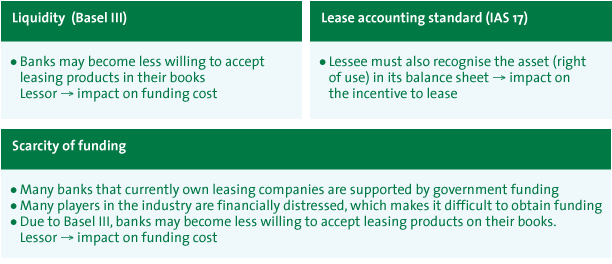
Table 1. Impact of the changes in accounting regulation & scarcity of funding.
How are leasing companies reacting to these market developments?
These developments mean that a mix of various strategies must be followed. They impact the IT strategies of leasing companies unequivocally. In summary, the European automotive lease market can be expected to recover, although the pace appears to depend on current government austerity programs and the general economic situation. Tables 2 and 3 summarise our view of the SWOT analysis of the automotive and equipment leasing markets in Europe.
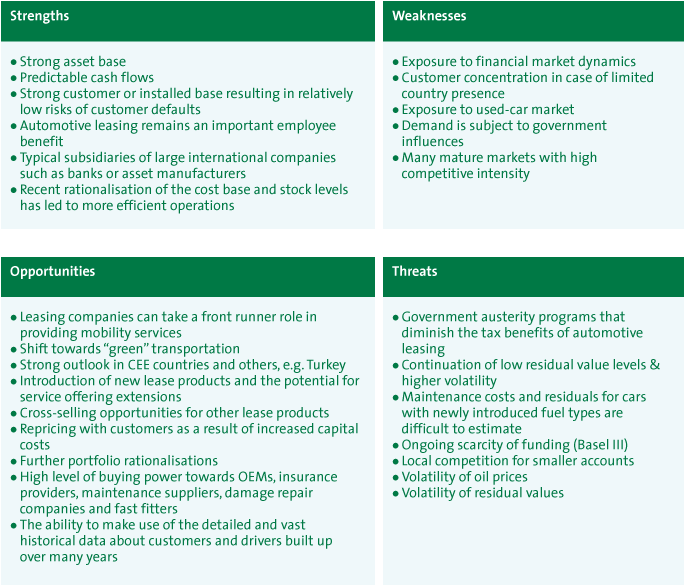
Table 2. SWOT analysis of automotive leasing in Europe.
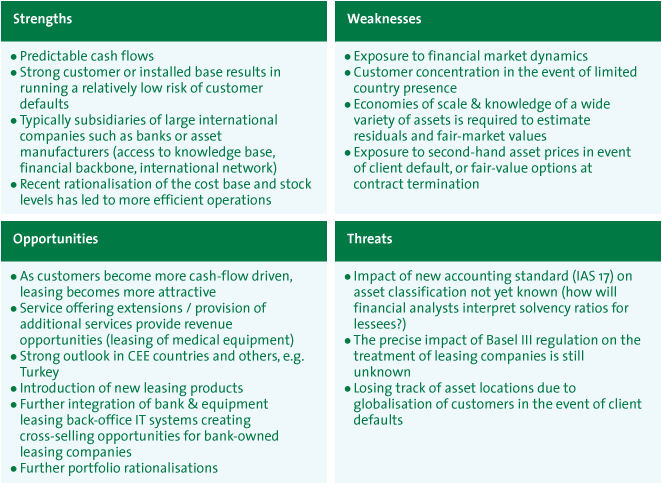
Table 3. SWOT analysis of equipment leasing in Europe.
Back to core business (services or asset finance)
As it is not feasible for banks to build up specific asset knowledge and as they are becoming more risk averse, the only way banks will continue as funders is by using residual value guarantees or buy-back agreements within the equipment leasing industry. Vendors, who understand the assets better than anyone else, increasingly bear the risk as the leasing companies try to avoid funding and offer more service contracts. Although market characteristics and lease penetration vary, in some markets we now see a closer coupling of asset finance alongside other banking services, such as invoice finance and general business banking. The management of common product lines between the bank and lease company and the optimal management of the customer relation is key in this. Joint master-data management is required for consistent reporting to both supervisory boards and customers. Further simplification of the user interface, workflow automation, business rules processing and more extensive integration with banking systems could further improve efficiency and accuracy. This would allow the leasing company to fully focus on maintaining and providing asset-specific expertise.
Product innovation and diversification
Leasing companies are seeking alternative sources of income. Financial leasing companies are increasingly offering additional services, while automotive leasing companies seek to offer alternative finance products (such as dealer financing or consumer finance), or financing for other vehicle types (such as commercial vehicles). Similarly, captive automotive lessors are offering multi-make leasing. Furthermore, some leasing companies specialize themselves in offering back-office to other lessors or offer fleet management services to large fleet owners or dealer fleets. The offering of mobility services for the B2E market is yet another example of product diversification. Table 4 shows our thoughts regarding the potential impact of mobility services on the IT front and back-office systems of automotive leasing companies.

Table 4. Mobility services & related IT requirements.
Efficiency improvements
Optimising business and administrative processes is often the first step towards realising the indirect benefits of acquisitions, product innovation and expansion. Time-to-market is becoming more and more challenging for many of the legacy systems in use by the large leasing companies across Europe. Substantial efficiency improvements can generally no longer be achieved by mere cost-cutting, but require the further automation and centralisation of back-office activities. To this end, the business processes as well as the architectural and system landscape require a real rethink.
Centralisation is a recurring theme. The centralisation of back-office activities is an option, especially for automotive and some equipment leasing companies. In fact, a number of leasing companies have already put it into place. This is partly supported by the fact that current back-office systems enable customers to use one single instance for multiple countries. Multi-country, multi-currency and multi-company features are now better suitable in the current generation of systems. Although sales and remarketing, required for close customer contact, will still be managed locally, credit acceptance, payments, invoicing, billing and asset management can be, and are already, managed centrally at multiple captive leasing companies. An additional advantage is that such a new operating model enables the start-up of lease activities in new countries in a relatively fast and cost-effective manner.
Although centralising back-office activities is the obvious thing to do, and some companies have succeeded or are succeeding at it, the differences per country and product portfolio make it complex and expensive for IT suppliers and hence difficult to budget. The latter is especially risky as some software suppliers, driven by the market, have to make fixed-price agreements that include many more responsibilities within the area of configuration and data migration than before. Under the surface, internal company politics plays an important role: it can be costly and time-consuming, and is often related to having authority over the back office and front office versus P&L responsibility. Without a solution to the latter, business and the related IT projects have failed and will continue to fail.
Further consolidation – sales and acquisition of lease portfolios
As a consequence of the credit crunch, several companies have evaluated whether to expand or sell their leasing activities. Acquiring competitors or portfolios requires harmonising a variety of factors, including business processes, pricing parameters and IT systems. Moreover, data migration for the acquired fleet is required as soon as possible. The first issue to address is to evaluate which of the current IT systems in use are capable of managing the increased portfolio size, which have the lowest long-term IT operations costs, and which are best suited to deal with future market and legislative changes. The next main challenge is to realise a fast integration project and related data conversion so that the migrated contract data can be actively used in the target leasing application.
Managing regulatory changes
The changes to legislation and accounting standards mentioned above make it difficult for leasing companies. This is not just a question of speed and impact; significant changes to systems and also to business processes may be required. Although many changes are still local (such as those related to emissions or luxury taxes), changes with an international footprint such as IAS 17 and Basel III are increasingly expected as European and international regulations continue to grow and develop. It is, for example, expected that those new international regulations may also have an impact on IT systems. Larger international operating-lease companies with different local IT systems may be confronted with significant investments, as each of these local solutions has to be adapted to comply with these new standards. Operating a single IT system across Europe only requires changes to one system. Dealing with other changes, such as environmental car legislation, provides further incentives for a standardised pan-European system landscape. A disadvantage of the single-IT system solution is the general concern often raised by smaller countries: will the local requirements of small countries get a high enough priority from the central centre of excellence? In addition, a single IT system solution has a significant impact on release management. What will be the most efficient way to implement new releases across Europe, to manage the testing activities and to keep the releases aligned in multiple countries? These are all important aspects to consider when defining your new system architecture and landscape on an international level.
Business in transition and its impact on IT
Market developments and business strategies call for a flexible, service-oriented IT landscape that is not monolithically dependent on different products or software vendors. It should comprise a client interaction layer through which not only dealers and intermediaries but also fleet managers, lessees and drivers can interact with the lessor. The back-office should contain a modular product set-up that enables the lessor to add new products, to keep pace with local and international legislative changes and enter new markets rapidly and flexibly. In addition, an IT strategy needs to be able to manage a mixed portfolio of legacy systems, off-the-shelf software systems and components of the IT landscape that can be put in the cloud so as to up- or down- scale hardware components in a faster and more flexible way. Such a landscape requires the lessor to rethink the business processes and reconsider the management required to maintain control over a complex IT infrastructure.
International system rollout
Based on previous implementations and lessons learned, KPMG has developed an international onboarding approach. This approach can be used for a multi-country implementation of ERP systems and is based on a standard rollout and implementation with the ability to have limited changes made to the system in individual countries. This tool set contains a fit-gap analysis of the target system against local environment, an onboarding approach for each of the countries and the governance model after onboarding.
A multi-country system implementation project should be considered in a wider perspective, as the onboarding of multiple countries on one system is an important enabler for a the consolidation of back-office activities into a shared service centre (SSC), which enables the centralisation of back-office processes in finance, human resources and risk. The expected savings for such a set-up could be significant.
Using the onboarding approach, a project can be split into five phases and six task categories. The key deliverables for each phase and task are shown in Figure 2.
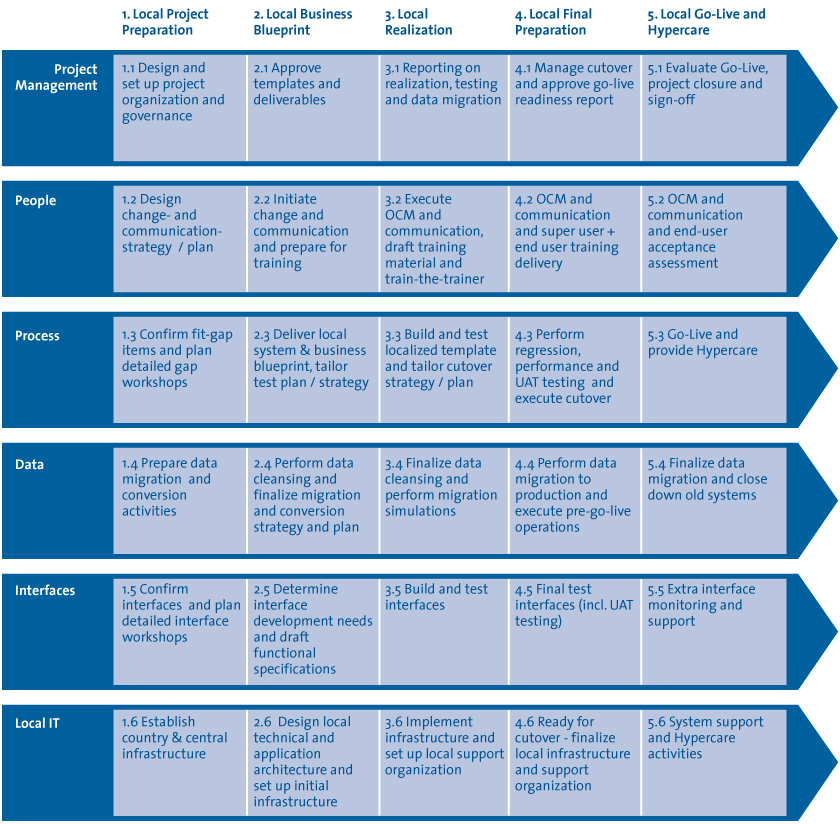
Figure 2. KPMG’s onboarding approach for multi-country IT system implementation projects.
An enabler of a successful solution roll-in is an “adopt harmonised processes and policies, rather than adapt functionality” attitude during the onboarding project and after going live. Local customisation of the solution should be limited as much as possible; instead, compliance with the harmonised process or local configuration of functionality will be promoted. In order to support this, KPMG has set up a tool kit that supports this onboarding approach:
- Country specifics: a questionnaire filled out with country specifics for multiple countries for leasing companies with respect to legal and business specifics
- Process analysis: process descriptions of lease processes and key risks, combined with a security questionnaire (this is used for role and security setup of the system)
- Data migration & financial reconciliation plan: detailed plan and key criteria for executing data migration and financial reconciliation
- Project plan: plan that describes and supports international onboarding approach for countries to implement a centralised system
Conclusion
The leasing market is “under reconstruction” after years of stable growth and relatively few developments. Leasing companies will need to fully focus on maintaining and providing specific asset-type expertise. In the automotive leasing market, both mobility services and a stronger focus on the environmental impact of asset usage are unavoidable, with the Netherlands and the United Kingdom as front runners. The credit crunch and changing legislation are shaking up the establishment, and the impact of developments such as accounting changes or Basel III is not yet fully known, as opinions are still being formed in this area. However, changing capital and liquidity requirements have the capacity to skew the attractiveness of one product vs. another, or even to influence the corporate structure of businesses engaged in asset finance. Although efficiency is key, this results in tension around compliance.
Economies of scale are created by take-overs and back-office centralisation. Contemporary IT systems need to be up to the job, and many legacy systems are due for replacement. The call for open systems has been heard, and up-scaling hardware with more and more “cloud computing” solutions should become less of an issue. Inevitably, it is often not so simple; issues of data security, compliance and IT readiness will need to be overcome. Nevertheless, this is an area that we will see develop. As the market dictates and as customers are becoming more aware, the IT-system suppliers are facilitating open systems. A flexible and scalable IT landscape is required to be able to tackle regulatory changes, quickly introduce new products and enter new markets. Methodologies have been developed by KPMG based on past experiences to support rollouts in multiple countries for a single ERP system rollout.
We have asked CHP Consulting, one of the leading suppliers of software for the leasing industry, which modifications they have made to their system (ALFA) to ensure compliance with the new classification standard.
“CHP Consulting has been following the IASB/FASB convergence project since its inception, including the publication of the Exposure Draft and the subsequent re-deliberations. From a systems perspective, we have identified some key challenges for leasing companies.
Now that a single de-recognition based model for lessor accounting has been proposed, the required software changes are simpler than previously envisaged. Nevertheless, where systems have a more flexible architecture, the challenge posed by the introduction of new accounting models will be far less onerous than for home-grown systems built around the existing standards. Given that some national tax authorities have said that lessors should continue to account under the current standards or local GAAP for tax purposes, the ability to apply both the new and old accounting methods simultaneously will become critical in certain regulatory environments.
Managing the transition to the new standards will be a significant project for lessors as they will need to reclassify their leases, determine the current fair values of all their leased assets that will be accounted for under the de-recognition model, bulk change their agreements to restate their portfolio under the new standards and provide comparative figures, potentially over a significant length of time.
As the regulatory boards have recently announced their intention to expose their revised proposals for the new standard, we will finalise our system modifications after that. However, we are confident that the level of change will be relatively small, as, for example, multi-accounting support is already standard functionality in ALFA. Modifications to support the de-recognition model will be based on our existing support for finance leases under IFRS and US GAAP.”
Many of the major lease companies still have in-house developed legacy systems that have become difficult and expensive to maintain. One of the main reasons not to buy standardised IT solutions is that the larger companies do not want to be dependent on a relatively small software house for their back-office system, certainly not on an international scale. In addition, they want to possess the intellectual property rights of the specific development/customisation. We have asked Sofico, one of the leading suppliers of software for the automotive leasing industry, about their service offering and their opinion on how to deal with these sometimes contradicting requirements.
“Sofico’s strategy in developing Miles has recognised the conflicting needs for standardisation and variation. As a result, Sofico wants to provide a spectrum of implementation models for Miles, to suit different scenarios.
The Miles reference implementation is the most standardised offering. In this scenario, a default system configuration is used to fast-track the implementation. The implementation begins from a base configuration that is used to benchmark specific requirements. Where the leasing company calls for changes, these can be made, but wherever practical, the default implementation should be retained. Configuration tools can be used to implement the required changes efficiently and without changing the Miles source code.
At the other extreme, Miles includes a comprehensive toolset for implementing specific, differentiating requirements into the end solution. These range from configuration (formulas, business rules, workflows) through to coded extensions via Open Miles. Open Miles brings access to the Miles Public Application Programming Interface (API) meaning that the leasing company is able to develop its own applications on top of the Miles core.
In this way, Sofico believes that Miles can offer the flexibility of bespoke development without the massive cost, underpinned by a set of end-to-end core functionality which is both maintained and enhanced externally from the perspective of the leasing company.”




